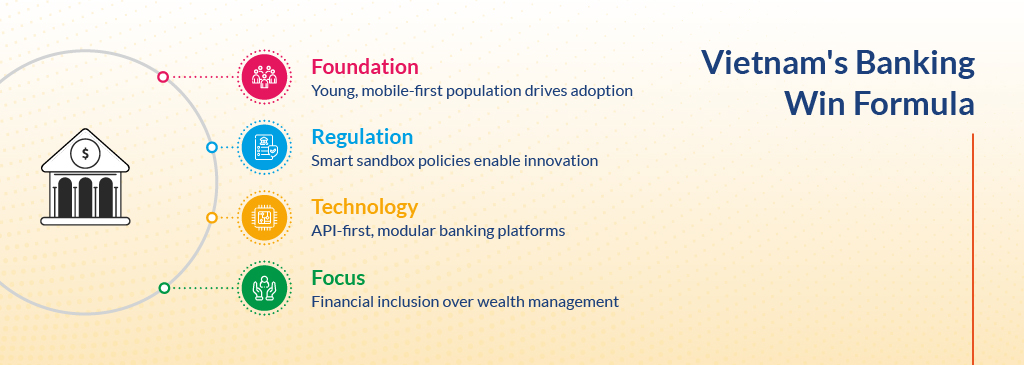Here’s something that might surprise you:
Vietnam captured about 5.5 billion cashless transactions in Q1 2025. Alongside regional leaders like Singapore and Thailand, Vietnam has transformed its banking sector into a digital-first powerhouse.
The Mobile Money Boom
Vietnam’s banking transformation is happening faster than anyone expected. The country has some serious advantages working in its favour. Here’s what’s really driving the change:
- Adult payment account ownership hit 87%, exceeding the 2025 goal of 80% much earlier than anticipated
- Mobile payment transactions show impressive year-over-year growth surpassing 100%
- Banks are seeing strong lending growth across both retail and business segments.
The smartphone adoption here is off the charts, especially among younger Vietnamese who basically expect everything to work on their phones.
Smart Regulations That Actually Help
Here’s where Vietnam gets it right: their regulators aren’t just saying “no” to everything new. The State Bank of Vietnam has been surprisingly progressive.
The game-changers include:
- A proper fintech sandbox launched in July 2025 that lets companies test credit scoring, open APIs, and P2P lending
- New open banking rules that force banks to standardize their APIs—no more proprietary nonsense
- Mandatory biometric authentication for online banking (yes, that sounds scary, but it’s actually making things more secure)
Instead of killing innovation with red tape, they’re creating frameworks that let fintech actually build useful stuff.
Modular Banking Services Drive Innovation
Vietnamese banks are embracing what we call “composable banking”—basically building their systems like LEGO blocks instead of giant, unmovable structures.
This modular approach is changing everything:
- Banks can launch new products in weeks, not years
- They can plug into e-commerce platforms and digital wallets without major surgery
- AI-powered features like smart credit scoring and fraud detection become much easier to implement
- Customer experience improvements happen continuously instead of through massive, painful overhauls
It’s the difference between renovating your entire house versus just swapping out the furniture.
Experience-First Banking
Vietnamese customers don’t just want digital banking—they want banking that actually makes sense. The banks that are winning understand this completely.
The successful ones focus on:
- Personalisation that goes beyond “Hello [First Name]”—we’re talking about products that adapt to how people actually live and spend
- Account opening that takes minutes, not days (using those new digital ID systems)
- Integration with the social commerce platforms Vietnamese people actually use daily
- Customer service that combines smart chatbots with real humans who can solve actual problems
The banks that treat digital transformation like a checklist exercise are getting left behind.

